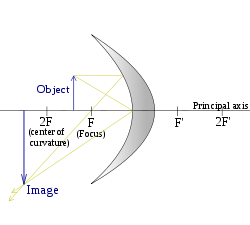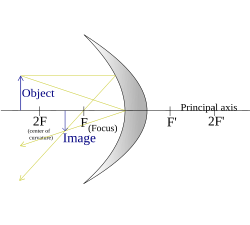Convex Mirror

Ray diagrams are constructed by taking the path of three distinct rays from a point on the object:
X) a ray parallel to the principal axis reflected through F (the principal focus)
Y) a ray passing through C which is then reflected back along its original path
Z) a ray passing through F, which is then reflected parallel to the principal axis
Click on the diagram to play!

 This is ME
This is ME




















